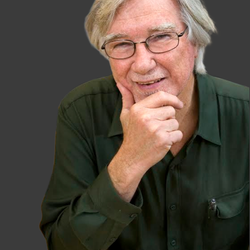
V. Reggie Edgerton
Broccoli Impossible to Possible Spinal Cord Injury Research Lab Broccoli Impossible to Possible Pedi
About this speaker
I have been studying neuromuscular plasticity for the last five decades with the last four focused on the physiology of plasticity of the nervous system with an emphasis on spinal physiology and in developing neuromodulatory strategies to maximize recovery from severe neuromotor dysfunctions. Most of this effort has been focused on spinal epidural and noninvasive transcutaneous stimulation and pharmacological modulation, combined with activity dependent interventions to regain sensorimotor functions after severe paralysis. After having demonstrated the feasibility of using epidural stimulation techniques in human subjects with complete paralysis, it became evident that severely spinal injured individuals can recover significant sensory-motor and other organ system functions. One is to significantly improve the technology of electrical stimulation and identify optimal pharmacological drugs that can facilitate recovery of motor function when combined with training (motor learning). The second point of urgency that became apparent was the need for more clearly defining the mechanisms by which recovery of motor and autonomic function occurs following complete paralysis. Our physiological results provide compelling evidence that spinal interneurons can be transformed to obtain remarkably normal coordinated motor tasks using spinal transcutaneous to rapidly change the physiological states of neuronal networks in the spinal cord and the brain. We are reasonably certain that we can achieve a much more adaptable and highly successful modulatory methodology that will enable us to focus the modulation on specific population of interneurons along the spinal axis to selectively activate different motor pools and thus muscles. Our most recent results demonstrate that we can effectively neuromodulate networks of the brain by stimulating spinal networks. This is a process of continuing technical development, beginning with the initial study of identifying the anatomical location interneurons that generates central pattern generation, As we reported in the laboratory of Sten Grillner in 1976. Given what we know today and the potential of capitalizing on the functional automaticity of the spinal circuitry in achieving significant recovery of locomotor function, our strategy is to capitalize on these initial fundamental observations for multiple sensory motor functions linked to a wide range dysfunctions.
Our lab, in conjunction with Dr. Susan Harkema and Yury Gerasimenko were the first to demonstrate that multiple functions could be recovered simultaneously with a combination of spinal neuromodulation and activity-dependent interventions in individuals that had been completely paralyzed for more than a year. This was demonstrated initially using the standard surgically implanted device that is approved for treating pain. Our first four subjects regained voluntary movement, assisted stepping and independent standing. But in parallel, improved sexual, bladder, bowel functions, improved temperature control, cardiovascular responses to sustain normal blood pressure when challenged or thostatically regaining the ability to sweat, and regained numerous sensory modalities with different degrees functionalities. Similar results were obtained in using the surgically implant at cervical segments and regaining upper limb functions. We then performed similar experiments after developing noninvasive methods which provided similar outcomes as the surgical implants. During these developments we performed extensive experiments in animals demonstrating also that pharmacological approaches that can be used synergistically with spinal stimulation to further facilitate recovery of some of the functions lost after decades of complete paralysis. We most recently have demonstrated that similar approaches have rather remarkable responses in regaining upperlimb functions after chronic paralysis due to cervical spinal injuries and in treating multiple dysfunctions in cerebral palsy.
Our major goal is to apply three interventions (transcutaneous spinal neuromodulation , neuromodulation of the motor cortex , and motor training using a robotic device(Ekso Bionics) to facilitate brain-spinal networks to regain synergistic over ground motor functions in humans with a chronic spinal cord injury (SCI). At this time, however, the exciting possibilities to begin to understand and demonstrate the wisdom of studying how the brain and spinal cord works as an integrated system, using some of the new imaging and physiological methods that are currently evolving to help in understanding how we function as a totally integrated organism under in vivo conditions.






